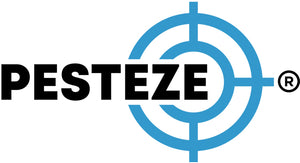RODENT DROPPINGS SAFETY GUIDE: CLEANING AND PREVENTION

RODENT DROPPINGS SAFETY GUIDE: CLEANING AND PREVENTION
SUMMARY
Rodent droppings are not just unpleasant—they’re dangerous. They can contain harmful bacteria and viruses that pose serious health risks if handled or cleaned incorrectly. Learn how to identify rodent droppings safely, clean contaminated areas properly, and take preventive steps to keep your home rodent-free.
FEATURES
• Health Hazards: Rodent droppings can spread Hantavirus, Salmonella, and other infectious diseases.
• Identification Tips: Recognize the size, shape, and color differences between rat and mouse droppings.
• Safe Cleaning Methods: Learn proper disinfection techniques to eliminate pathogens without stirring dust.
• Protective Equipment: Discover the best gloves, masks, and tools for cleaning contaminated areas safely.
• Prevention Strategies: Seal entry points, store food securely, and eliminate nesting sites.
• Professional Help: Know when it’s time to call pest control experts for safe and complete removal.
GUIDE DESCRIPTION
Rodent droppings are one of the most concerning signs of an infestation. Besides being unsightly, they carry harmful bacteria and viruses that can infect humans through direct contact or inhalation of contaminated dust. Understanding how to identify, clean, and prevent rodent droppings is crucial for maintaining a healthy and safe home environment.
The first step is identification. Mouse droppings are typically small and pointed at both ends, about the size of a grain of rice, while rat droppings are larger and rounded. Fresh droppings are dark and moist, whereas older ones appear dry and brittle. Recognizing these differences can help you determine the severity and type of infestation.
When cleaning, safety should be your top priority. Never sweep or vacuum rodent droppings directly, as this can send harmful particles into the air. Instead, spray the affected area with a disinfectant or a bleach solution and let it sit for several minutes before carefully wiping it up with disposable paper towels. Dispose of the waste in sealed plastic bags and wash your hands thoroughly afterward.
Always wear protective gear while cleaning, including disposable gloves and an N95 mask, to prevent inhaling or touching contaminated dust. If droppings are found in ventilation ducts, crawl spaces, or other confined areas, consider professional cleaning to avoid exposure to dangerous airborne particles.
Prevention is the best long-term strategy. Seal gaps and cracks in your home’s foundation, keep food in airtight containers, and remove clutter where rodents might nest. Regularly inspect hidden areas such as basements, attics, and garages for new signs of activity.
If droppings continue to appear even after cleaning and sealing entry points, it may indicate an active infestation. In such cases, contact pest control professionals who can safely remove rodents and sanitize affected areas. A proactive approach ensures not only a cleaner space but also protection from serious health risks.
- Aahna Barma


Comments 0